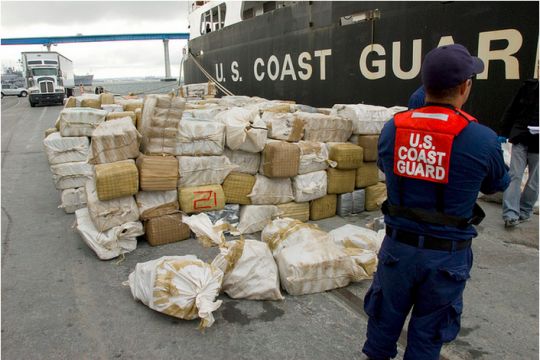On Thursday, Aug. 6, 2015, a U.S. Coast Guard crew based in Northern California announced the seizure of more than six tons of cocaine worth an estimated $181 million from a partially submerged vessel in the Pacific Ocean.
The bust, which took place on July 18th, occurred in international waters 200 miles off the coast of Central America, after a Navy maritime patrol aircraft spotted the vessel and alerted the Alameda-based crew aboard the 420-foot Coast Guard cutter Stratton, which was patrolling the area, said Petty Officer Michael Anderson.
“Afuera! Afuera!” a Coast Guard crew member yelled.
One by one, the four men in the vessel climbed out. They were taken into custody and will be prosecuted by the U.S. Attorney’s office, officials said. A list of charges was not immediately available.
The vessel contained more than 16,000 pounds of cocaine wrapped in hundreds of bails and bricks, Anderson said. The Coast Guard crewmen loaded 275 bales, or 12,000 pounds, of the cocaine onto the Stratton. They left 4,000 pounds of cocaine on board the vessel for balance as they towed it to shore.
But before the Coast Guard could make it to shore, the smuggling vessel took on water and sank, cocaine and all. The depth where it sank was 13,000 feet, and the Coast Guard considers the cargo lost, Anderson said.
The smuggling vessels act like low-tech submarines, which are mostly submerged with only a cockpit and an exhaust pipe above the surface. They’re extremely difficult to detect and dangerous to operate, Coast Guard officials say.
The vessels’ operators have been known to sink their cargo instead of having it seized, and sometimes crew members drown, Coast Guard officials said.
The bust was the second by the Stratton crew this summer, officials said. In June, they stopped another partially submerged vessel carrying 5,460 pounds of cocaine. Since April, the crew has stopped or interrupted 15 smuggling attempts in the Pacific, the agency said.
Since May, the Stratton crew has seized more than 33,000 pounds of cocaine worth more than $540 million.

